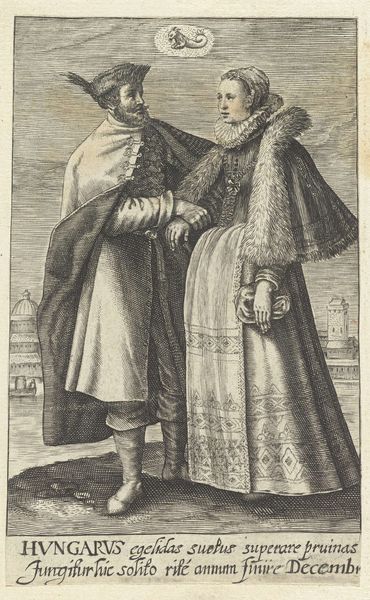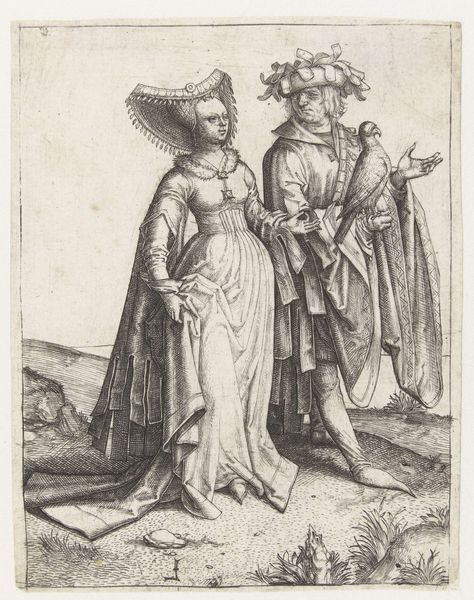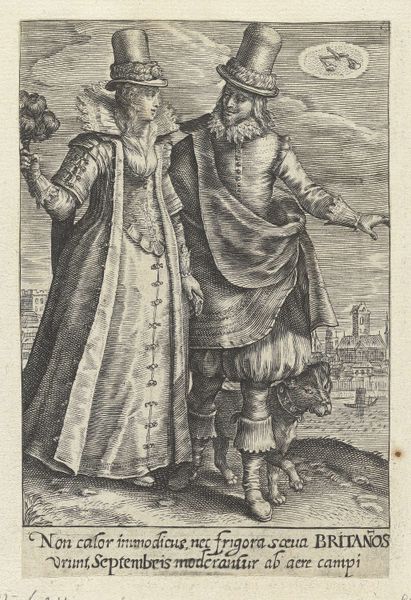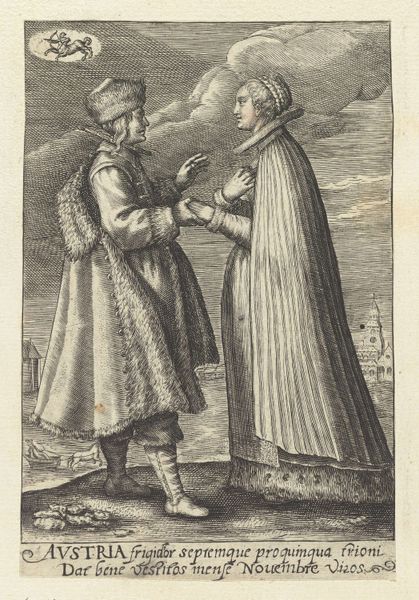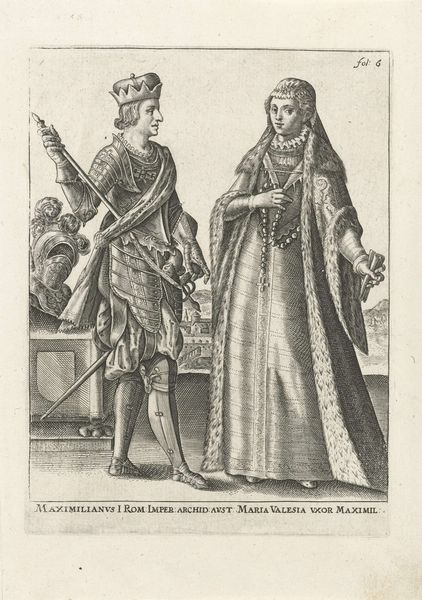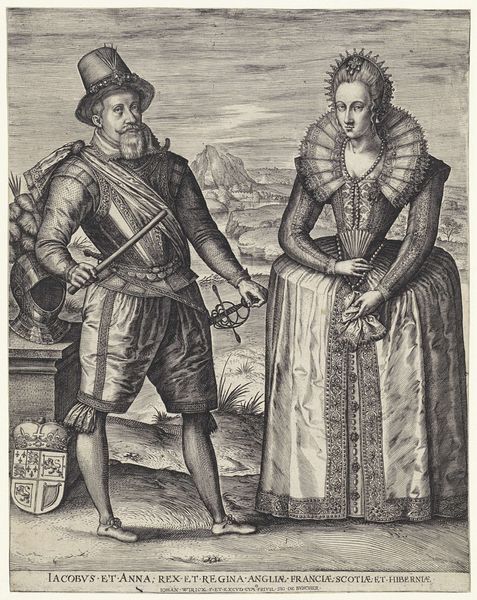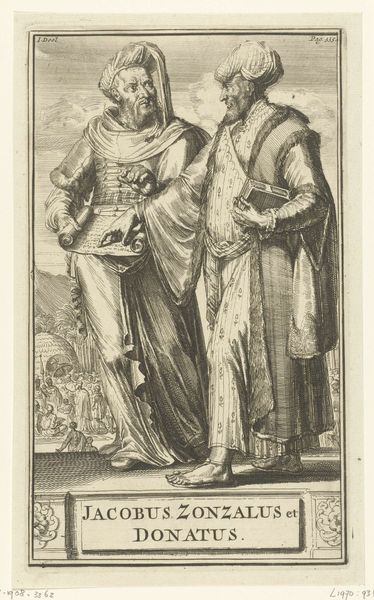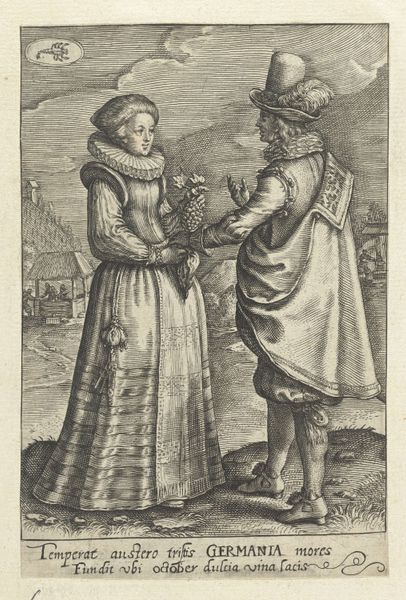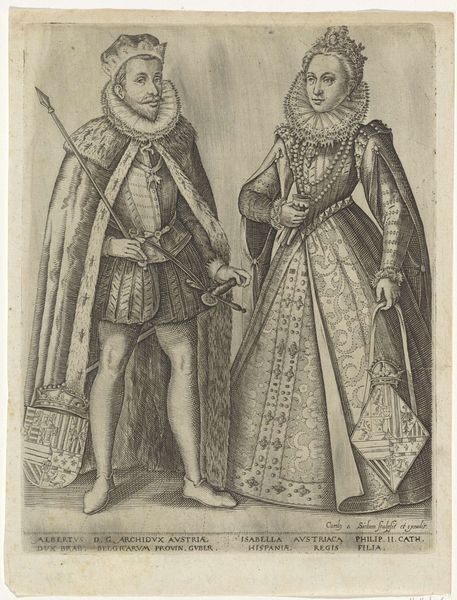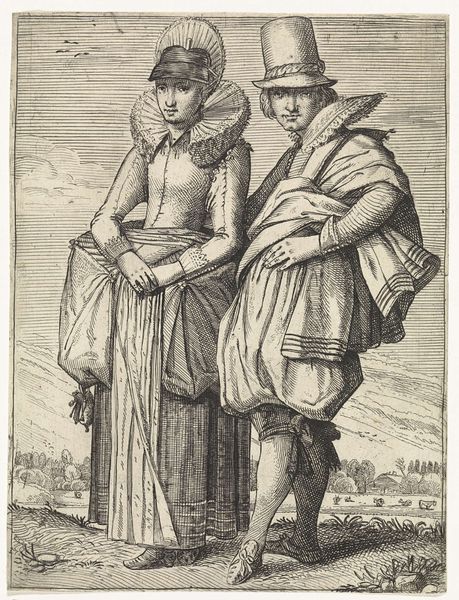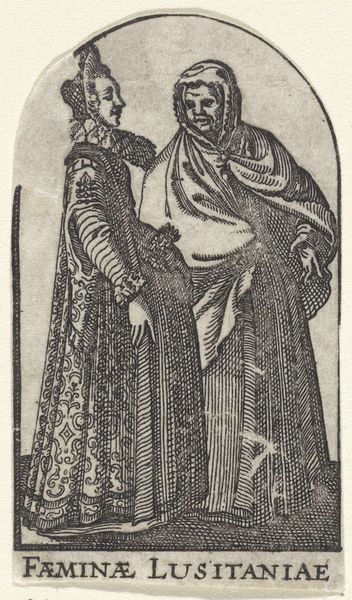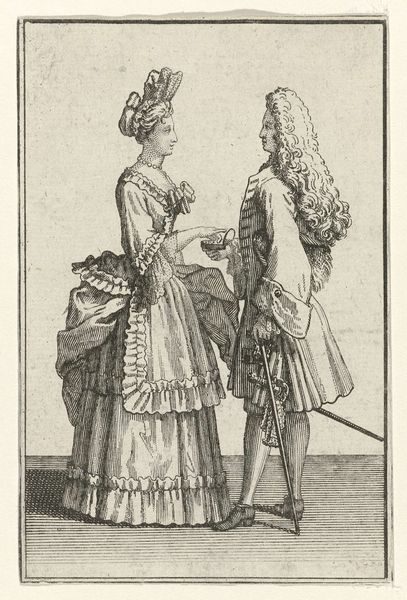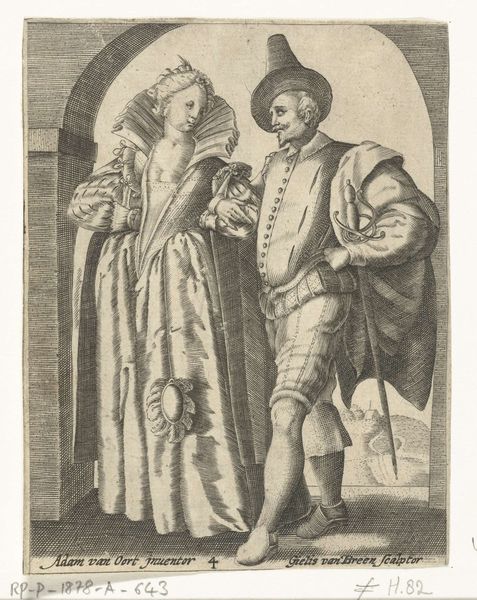
print, engraving
#
portrait
#
baroque
# print
#
genre-painting
#
engraving
Dimensions: height 135 mm, width 86 mm, height 242 mm, width 271 mm
Copyright: Rijks Museum: Open Domain
Curator: The Rijksmuseum holds this engraving by Crispijn van de Passe the Younger, titled “June: A Couple from Spain,” dating from the early to mid-17th century. What strikes you initially about this depiction? Editor: It’s the ruffs! Those enormous lace collars practically encircle their heads like halos or maybe even millstones. They're such an overt symbol of status and yet, seem utterly impractical, like beautiful cages. Curator: The ruffs are indeed notable, setting a particular tone that communicates elite identity. This print is part of a series representing different nationalities by showcasing their distinctive dress. Here, Spanish fashion is put on display. How might prints like these function within a broader European context? Editor: In a period defined by burgeoning global trade and colonization, these prints create and perpetuate a visual taxonomy of people. It feels akin to a form of early ethnographic cataloging, simultaneously exoticizing and, perhaps, subtly reinforcing existing European power structures. Who gets to observe, to categorize, to visually “own” these images of others? Curator: Precisely. The act of observing and documenting was undeniably tied to colonial ambitions and emerging national identities. Also note the inscription; text was critical for interpreting the images and disseminating knowledge, albeit knowledge often shaped by cultural biases. How do you read this pairing? The way they’re posed, their expressions… Editor: I see a studied formality. Their almost hesitant touch conveys a social dance of sorts. It speaks to arranged marriages and the weight of familial or dynastic expectation. Also, I'm thinking about visibility – or rather, *in*visibility. Who is truly represented? This feels more like performance, class performance especially, than anything intimate or revealing of true lived experience. Curator: That's a powerful observation. It pushes us to question the authenticity of these types of depictions, to see them as constructed representations intended to communicate certain messages about status and culture. Editor: Looking closely has made me question how this image both reveals and conceals. How easy it is to fall into the trap of exoticism without thinking about whose perspective dominates the visual narrative. Curator: I think that is a crucial insight, and I appreciate that focus when considering artworks meant to convey cultural specifics.
Comments
No comments
Be the first to comment and join the conversation on the ultimate creative platform.
